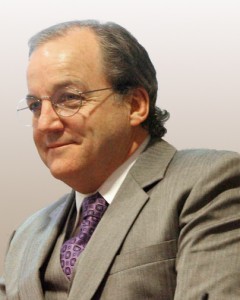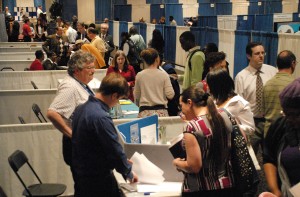
If you are in the job market, and if you feel like one of a million-plus folks looking for work ”“ you are right. There are now 1.7 million people who are considered unemployed or underutilized in New York state alone.
That daunting figure comes from Paul Harrington, a nationally renowned labor economist and director at Drexel University”™s Center for Labor Markets and Policy in Philadelphia.
Harrington will be in Tarrytown June 2 to talk about the national and local labor market trends and workforce development, as part of The Business Council of Westchester”™s KeyBank Speaker Series and the Westchester/Putnam Workforce Investment Board’s One-Stop Month.
In an interview, Harrington shared his concerns about events in the job market. He said there’s plenty to worry about, especially for those who have been out of work for a while or who don’t have marketable job skills. Westchester and Putnam counties have been doing better than many places in the country ”“ but that hides the pain suffered by many people pushed out, and kept out, of the job market.
“I put together the number of people who are underutilized in New York State,” Harrington said. “These are people who are either officially unemployed or working part-time for economic reasons, or they had quit the job market altogether. But when asked, they say they want to go to work right away. You”™ve got about 1.7 million people in New York State in that category,” he said. “That”™s a lot of people. There are lots and lots of excess labor supply. So it”™s going to be a while to work all that down.”

Harrington also added that in New York state, the ratio of unemployed workers to job vacancies is “somewhere around three-and-a-half and four unemployed workers for each vacancy.”
Economic recovery seems uncertain
But, said Harrington, the economy is not growing fast enough to create enough new jobs for dislocated workers ”“ not to mention the new crop of high school and college graduates. He said the country is actually at a time of a high degree of uncertainty, adding that the first-quarter gross domestic product (GDP) report was “extremely disappointing,” coming on the heels of the $400-billion second round of economic stimulus.
The jobs report has been better the last couple of months, he added, but there are a set of headwinds in the second half of the year and into 2012 that suggest that the country may not get rapid GDP growth. “That means probably a pretty sluggish new job creation,” Harrington said. “On the jobs front, it will be a while yet before we start taking a very rapid pace of job creation. I hope I am wrong. But I think there is a set of problems out there.”
This has been a “funny” recovery, he said. “One of the ways it’s funny is that the U.S. economy ”“ for the last 15-16 months ”“ has only added about 1.8 million jobs. Over a similar period of time, New York state maybe added 100,000-to-110,000 jobs.”
All those things have meant that the unemployment rate has stayed relatively high. And Harrington said one of the things that is important to understand is that the length of time people are out of work is quite long now: “Close to a quarter of everybody in the state who’s officially unemployed has been out of work for a year or more. That’s historically unprecedented. It’s amazing. We’ve just never seen anything like it.”
And the unemployment problem gets passed downward, putting a disproportionate burden on younger workers with fewer skills and less education. That’s because many college grads are now forced to take work that requires only high-school diplomas and push many high school grads and high school dropouts out of the job market. Said Harrington: “It’s a little bit better this year than last year. But for kids under 25, we found last year that almost half the kids who got bachelor’s degrees were unable to get a college labor market jobs.”
Harrington said the Westchester/Putnam Workforce Investment Board (WPWIB) plays an important role for job seekers. He gives high marks to the board’s successful programs connecting employers to applicants and working with business and education groups to help develop a skilled workforce in high-growth areas. “And particularly in counties like Westchester and Putnam, which is a very high-end job market, what matters a lot is understanding what sort of direction employment opportunities are likely to be heading,” he said.
At WPWIB, Harrington observed, “I think there really is this effort to try and build these bridges to local employers in a number of different ways. And having that multi-pronged strategy is exactly the right thing to do. They are working in partnerships with other education and training organizations within the region, and helping to bring them to employers and build these trust relationships.”



















